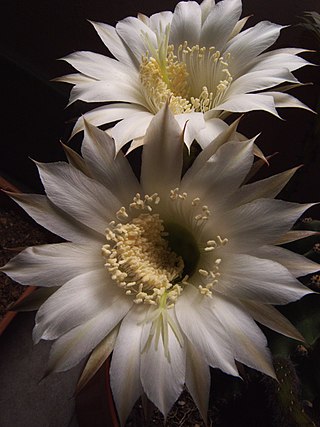
Echinopsis oxygona, also known as Eyries cactus, Easter lily cactus or sea-urchin cactus, is a species of flowering plant in the cactus family Cactaceae, native to South Brazil, Uruguay and northern Argentina. Its features include many robust spines, spherical shape, and a large flower, with sharply pointed lavender or white petals, and a fine faint scent.

Soehrensia schickendantzii is a cactus found in northwestern Argentina in provinces of Salta and Tucumán at elevations of 1600 to 3200 meters.
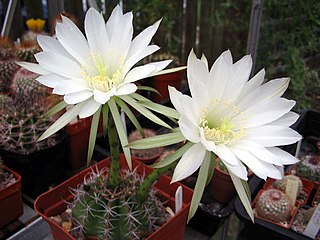
Echinopsis albispinosa is a species of cactus from Argentina. It should not be confused with Chamaecereus silvestrii.

Gymnocalycium baldianum, the spider-cactus or dwarf chin cactus, is a species of flowering plant in the cactus family Cactaceae, native to the Catamarca Province in Argentina.

Ferocactus gracilis, the fire barrel cactus, is a species of Ferocactus from Northwestern Mexico. This cactus gets its common name from the striking red coloration of its defensive spines and flowers.

Echinocereus bonkerae, also known as pinkflower hedgehog cactus, Bonker hedgehog, or short spined strawberry cactus, is a species of hedgehog cactus.
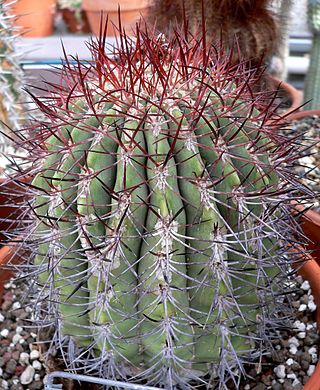
Denmoza is a monotypic genus of cacti. Its only species, Denmoza rhodacantha, is native to northwest Argentina.
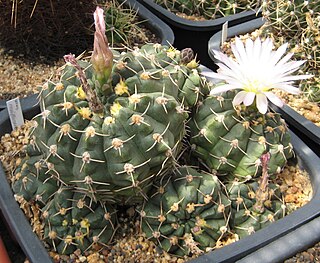
Gymnocalycium uruguayense is a species of Gymnocalycium from Brazil and Uruguay.
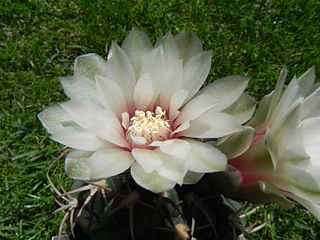
Gymnocalycium bayrianum is a species of Gymnocalycium from Argentina.

Acanthocalycium thionanthum is a species of Acanthocalycium from Argentina.

Echinopsis aurea, is a species of Echinopsis found in Argentina.
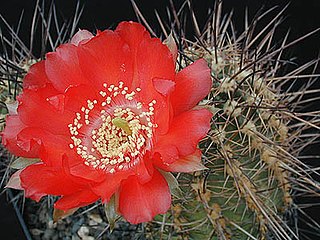
Echinopsis haematantha, is a species of Echinopsis found in Argentina and Bolivia.

Lobivia ferox, is a species of Lobivia found in Bolivia and Argentina.

Setiechinopsis is a monotypic genus of cacti. Its only species, Setiechinopsis mirabilis, is native to Argentina.

Lobivia tiegeliana, is a species of Lobivia found in Argentina and Bolivia.

Echinopsis chrysantha, is a species of Echinopsis found in Argentina.
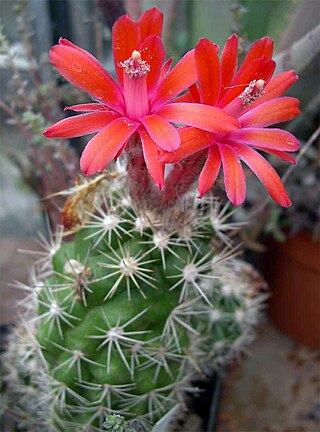
Matucana tuberculata is a species of Matucana found in Peru.
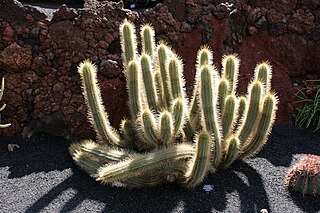
Soehrensia thelegonoides is a species of Soehrensia found in Argentina.

Oreocereus leucotrichus is a species of cactus native to Peru and Chile.

Soehrensia smrziana is a species of Soehrensia found in Argentina.





















